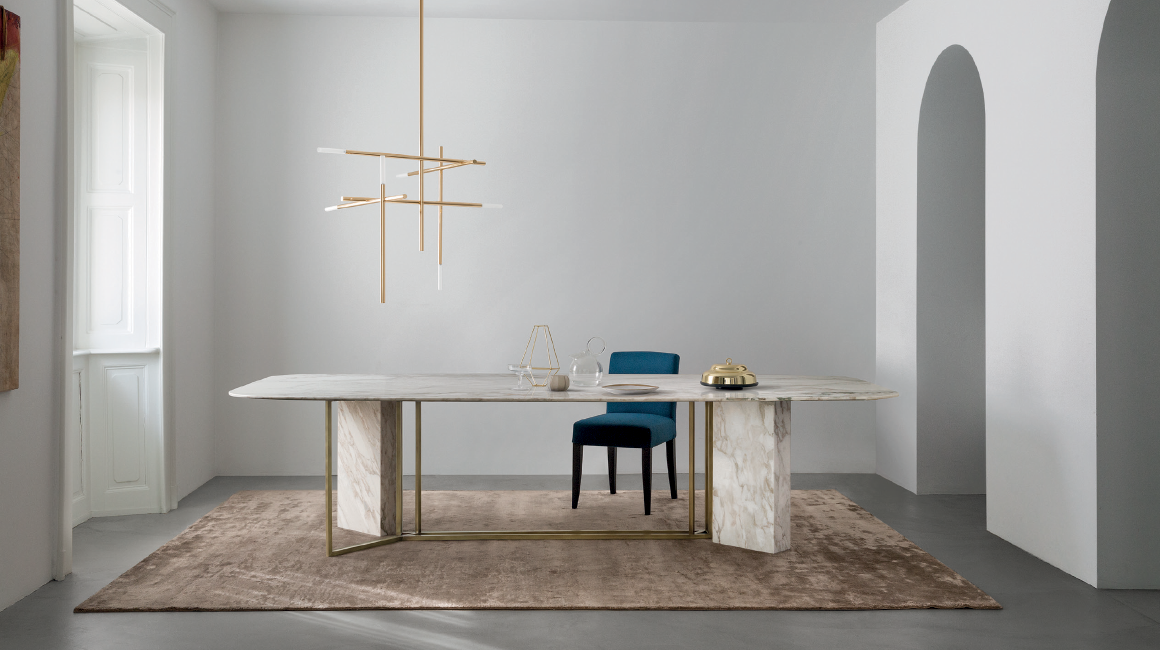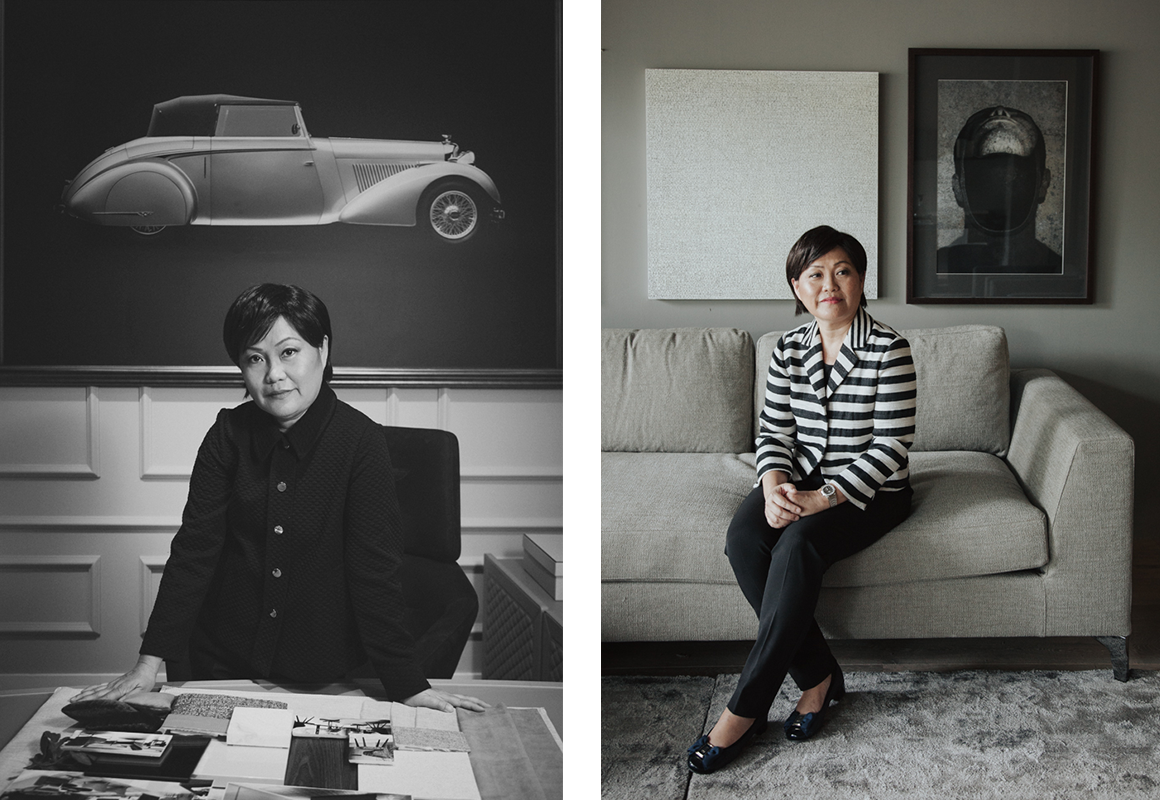When she finds time, Jean Wee likes to visit the showrooms at Marquis Furniture Gallery on Tai Seng Street where she holds office. She goes around the floor inspecting merchandise and set ups. At a recent walkabout, she stopped to adjust a picture frame, moved some accessories across a coffeetable, and told the staff who was doing the rounds with her that the cushions on a particular couch needed fluffing up.

Old habits die hard.
Jean Wee began her career as an interior designer, and has spent years on the job before joining a small group that founded what would become Nobel Design Holdings, currently a diversified company with interest in furniture retail, supply and installation, and related services, as well as property development. She is now the chief opertaing officer and an executive director responsible for marketing, sourcing operations, and brand development for the imported furniture business.
Jean is directly in charge of the group’s luxury furniture business, comprising Marquis Furniture Gallery and Marquis HQO; the former retails upmarket European furniture and accessories to end-users and specifier markets, and also provides home styling services. Marquis HQO, meanwhile, supplies furniture to various hospitality, residential, corporate, and F&B establishments.
- STAYING THE COURSE
- TELLING FIGURES
- GOING FORWARD
- ELEMENTS OF STYLE
Staying the Course
Although most of its brands are massed in the upper reaches of the market, Marquis has a spread of activities as well as the size that makes Jean confident it will ride through the predicted slowdown in 2017. Earlier, professional forecasters reportedly revised down their 2017 growth figures from 2.1 per cent to 1.8 per cent—a sign that market sentiment may not support a buoyant retail sector.
“Marquis Furniture Gallery started 1993; since then we have ridden through several economic recessions, including the Asian financial crisis in 1997, the global financial crisis in 2008, and so on.”
Throughout the years, Jean points out, “we have become stronger as a business group, and have gained more experience in dealing with market slowdown”.
Jean anticipates the negative impact of this downturn to be less intense. “Although consumers are cautious in their expenditure, the premium furniture category seems to be holding up well. With our years of experience and the strength in our organisation, we are well placed to withstand any economic slowdown compared to the smaller players in the market,” she says.
This confidence is reflected in Marquis’ activities this year, from relaunching a revamped MisuraEmme showroom to strengthening Lifestorey’s digital platform to support the growing online consumer activities. “This year, we expanded our showroom space at Tai Seng Street to about 30 per cent,” she beams. “We have also invited world-renowned architect and designer, Mauro Lipparini, to introduce his works to Singaporean architect and designers. Lipparini is among the designers of MisuraEmme, which we represent.” Marquis has also increased the end-user focus of its interior design division, Marquis Home Styling, to augment its already strong relationship with property developers.
“The situation will not stop us from moving forward,” Jean points out. “We believe that it is important to upkeep our brand positioning. We constantly look into ways to keep our showrooms interesting, by taking on new portfolios like Bentley Furniture, as well as revamping our MisuraEmme showcase, adding more display to the entire collection.”

- STAYING THE COURSE
- TELLING FIGURES
- GOING FORWARD
- ELEMENTS OF STYLE
Telling Figures
Instead of revising targets to a more comfortable figure, Jean hopes to retain theirs for 2017 the same as this year. “However,” she admits, “looking at the economic situation, we may expect a shortfall.”
Marquis’ business is predominantly in Singapore. Although it maintains presence in Malaysia, Thailand, Indonesia and Myanmar, its overseas sales contribution is not significantly large. “It shouldn’t adversely affect our overall revenues even if the downturn in the region persists,” Jean explains. “Moreover, we do see a trend of Singapore customers investing in weekend houses overseas.”
Jean and her team foresee see better opportunities in the contract and hospitality sectors going forward. “Local designers understand the need for international furniture brands in their proposals. In fact, some overseas companies from emerging markets throughout region have approached us to provide them with our advisory services in furniture and furnishing trends.”
- STAYING THE COURSE
- TELLING FIGURES
- GOING FORWARD
- ELEMENTS OF STYLE
Going Forward
Among the moves highlighted by Terence Goon, Nobel Design Holdings’ group CEO and group managing director, in his 2015 annual report was the development of the group’s presence on the Internet “to address the shift of media consumption patterns of customers in 2016”.
Jean concurs that “we are living in the digital age and have to stay current in order to meet the changing consumer demands.” She points out that consumers tend to do their research online to find out more about the product, brand and price before they make any purchase. “As a result, prices become transparent and we have to ensure our pricing is competitive and stay relevant. We constantly leverage on technology to enhance our digital platform. Our websites have been optimised to be more responsive and user-friendly.”
She emphasizes, however, that the threat of competition from e-commerce “is less pronounced in the upmarket segment than in the mass market consumer space. Clients in this demographic still appreciate the presence of physical store where they can touch and feel the furniture pieces before they purchase.”
Given the less than optimistic forecast, Jean favours the constant rationalization of cost structure “to ensure not only that operating costs are as lean as possible, but we take a strategic view to eliminate unnecessary spending.
“However, we do not compromise on our sales force and still maintain the number of sale consultants in proportion to the size of the showroom. It is important to ensure quality service to our customers.”
Marquis sends its sales staff for courses and seminars that are not only those within their job scope. “We encourage them to take up topics relating to the industry. For instance, we allow sales staff to take up basic interior courses so that they can act as an in-house home stylist to our customers. In this way, we can provide more services to them and add value to their purchase experience.”
- STAYING THE COURSE
- TELLING FIGURES
- GOING FORWARD
- ELEMENTS OF STYLE
Elements of Style
Marquis Furniture Gallery’s luxury furniture business is a mix of well-known and trade byword brands including Minotti, Porada, Merdiani, Misura Emme, Hamilton Conte, Cierre, Vissionnaire, Bentley Furniture, and Lifestorey. They are mostly housed in the Group’s Tai Seng Street building, except Minotti, which has its standalone showroom on Hill Street.
The showroom spaces allocated and designed exclusively for various brands reflect their aesthetic direction and brand positioning. Jean Wee, who heads the Marquis upmarket furniture business, is directly involved in the design and furnishing of every showcase. Working with brand principals, she puts together not only the latest collections but also the accessories that help articulate the essence of the brands.
Every little detail is assessed and calibrated to contribute to the feel of the space. Books, throws, accessories, even the intesity of lighting must pass Jean’s rigorous standards before they are included in a setup.













 Back
Back
